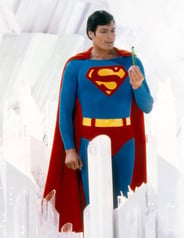A single centimeter, a ruined life: The accident that c - Reeve Foundation
Article Source: Icon - El Pais: Un solo centímetro, una vida arruinada: el accidente que hizo que Christopher Reeve (Superman) pasase de estrella a leyenda; CARLOS MEGÍA - 26 MAY 2020 - 16:13 EDT
On May 27, 1995, the actor injured his spinal cord after falling off his horse in an equestrian competition. Today, hundreds of thousands of people have seen their quality of life improved through his selfless commitment and relentless activism.
Christopher Reeve’s life changed on May 27, 1995. The actor, an established star in Hollywood for two decades, was also a diligent enthusiast in equestrian competitions. On that spring afternoon, along with 300 other riders, he participated in a roadblock test in the small town of Culpeper, Virginia. As he approached a triple-pole jump, Buck – the nickname of his thoroughbred horse – stopped dry, and Reeve fell headfirst across the barrier.
Before climbing on the back of his horse Buck, Reeve went through a problematic professional period. Having played Krypton's hero, he was struggling without much success to separate himself from that role and demonstrate his dramatic talent.
The blow left him paralyzed from the neck down and forever in a wheelchair. Reeve was only 42 years old. The doctors took away any hope of improvement, assuring him that it was “impossible” to recover movement. Twenty-five years after the tragic accident, the success story from the one who gave life to the most famous Superman on the big screen showed why, perhaps, as he would say, “the word ‘impossible’ [is] no longer part of the scientific community’s vocabulary.”
Before climbing on the back of his horse Buck, Reeve went through a problematic professional period. Having played Krypton's hero four times, he was struggling without much success to separate himself from that role and demonstrate his dramatic talent in films like Street Smart and The Remains of the Day. The accident changed everything.
The injuries were so severe that even his mother begged the doctors to withdraw his mechanical ventilation, and he came to appreciate the possibility of ending his life. Destiny was fickle: As The New York Times revealed, if the actor had fallen one centimeter further to the left, he would have died on the spot. If he had done so to the right, he would most likely walk out with less than a concussion. But it was a phrase from Dana, his second wife, which later gave name to his memoir (Still me), which made him grab on to life: “You’re still you. And I love you.” Published in 1998, the biography remained on The New York Times bestsellers list for eleven weeks and won a Grammy for its spoken version. 
Reeve not only became an inspiration for his efforts to overcome his injury but also for the constant work he led to improve the quality of life of people living with paralysis. In 1999, he created the Christopher & Dana Reeve Foundation. This national non-profit organization has so far managed to raise more than $130 million for research into different treatments and offer grants worth $30 million to various local organizations. He also raised public awareness – he lobbied in the US Congress – as well as to the society at large about the difficulties of those living with a disability. More than 100 000 injured and their family members have benefited from his work.
The injuries were so severe that even his mother begged the doctors to withdraw his mechanical ventilation, and he came to appreciate the possibility of ending his life.
“No one has accelerated the pace, interest, and support of paralysis research caused by spinal cord injury like Christopher,” explains Peter Wilderotter, president and CEO of the foundation, to ICON. “He toured the world to meet scientists, public representatives, entrepreneurs, and philanthropists. He became the voice, and above all the beacon of hope, of all those who live with paralysis”. Wilderotter met Reeve years before his accident when he already stood out in the hills of Los Angeles as one of the most committed actors to any kind of cause of charity. “He was everything one can expect from a famous character, but it is rarely fulfilled. I was struck by his memory, insight, and political compression. I remember thinking that if he were not an actor, he would have been a great political candidate.
Reeve, born in New York in 1952, had excellent academic training. He graduated from the prestigious Cornell University and was accepted into the exclusive Juilliard School of Interpretation, where he met his best friend in the industry, also the undergraduate Robin Williams. Reeve first stood out on Broadway, opposite Katherine Hepburn, in 1976 in the comedy A Matter of Gravity. 
A couple of years later, he would make his debut on the big screen by putting Clark Kent's glasses on the film directed by Richard Donner. That tall and lanky young man with jet black hair, unknown to the public, had captivated the film director from his first audition, and he dared to allow him to lead that production, which was the most expensive production in film history at the time. Superman became a global phenomenon that multiplied its box office budget six-fold. Critics gushed praise for the work of a Christopher Reeve, who has yet to be erased from collective memory like Kal-el.
The comedian and director of the Todopoderosos (All-Powerful) podcast, Arturo González-Campos, refers to Superman as an initiatory work, the first that he is aware of having seen in a movie theater. Turned into a hero in a global, multi-million-dollar hegemonic industry, González-Campos affirms that the film's premiere marked the height of the current phenomenon. “The film created the mold of how a superhero film should be made, many years before it was a regular genre in the cinema,” he adds. The author of books like Marvel, ¡qué hermosa eres! (Marvel, how beautiful you are!) believes that casting Reeve was the great success of the director Richard Donner, who was obsessed with the authenticity of the events told. “That required a great actor, coming from the theater and with a physical presence, like Reeve. When he flies, it is not only with special effects, he flies with his face, with his eyes... And when he is Clark Kent, he is him with all his body”.
Reeve reappeared in public at the 1996 Oscar Awards. A surprise remembered as one of the most exciting moments in the history of the awards, given away by Meryl Streep’s tears or Gwyneth Paltrow stand-up ovation to the actor's strength. “What you may not know is that I left New York in September and just arrived in Los Angeles this morning.” First, demonstrating that his sense of humor remained intact, he offered an emotional speech about the power of cinema as a speaker of social problems above even his box office interests.
Always dependent on assisted breathing, during his last years, he had managed to improve his quality of life by recovering movement in one finger and sensitivity in his legs. Despite his condition, the actor continued to perform (he was nominated for a Golden Globe for his work on a TV remake of Rear Window) and directed several TV movies until his death in October 2004 at the 52-year-old. His three children – two of them from his first marriage to the English model Gae Exton – took over the organization’s board when Dana died of lung cancer in 2006.
Twenty-five years after his equestrian accident, Reeve is still remembered by movie enthusiasts for having laid out the foundations of the modern superhero in the film industry. Proving, as Robert Downey Jr. or Christian Bale would later prove, that an actor must interpret a complex and credible hero with interpretative solvency. Some critics argue that the New Yorker left the bar so high that none of his successors will succeed in bringing a Clark Kent worthy of him. But, as Gonzáles Campos argues, it was following his accident that Reeve showed the hero he was inside. “Sometimes it happens that one assimilates the role he has played in fiction and ends up invading his reality, as in Birdman (Alexander G. Iñárritu). I think that he must have thought that Superman would have behaved in that way if it had happened to him. Knowing, moreover, that any achievement would not save a life, but perhaps would save those who would come after him. It was terrible but magnificent at the same time.”
“I think Chris is remembered today more for his activist work and being the visible face of an injury – the person our community aspires to become – than as an actor,” concludes Wilderotter. He claims that the wheelchair used by Reeve has today become an almost as powerful symbol as the red coat of Superman. Located in the foundation's offices, thousands of visitors look at it every year, aware that the legacy forged by its owner aided hundreds of thousands of lives without the need, at least in real life, to raise a hand from the ground to fill the skies.
You can follow ICON on Facebook, Twitter, Instagram, or subscribe here to the Newsletter.
Translation by Patricia E. Correa
Join Our Movement
What started as an idea has become a national movement. With your support, we can influence policy and inspire lasting change.
Become an Advocate